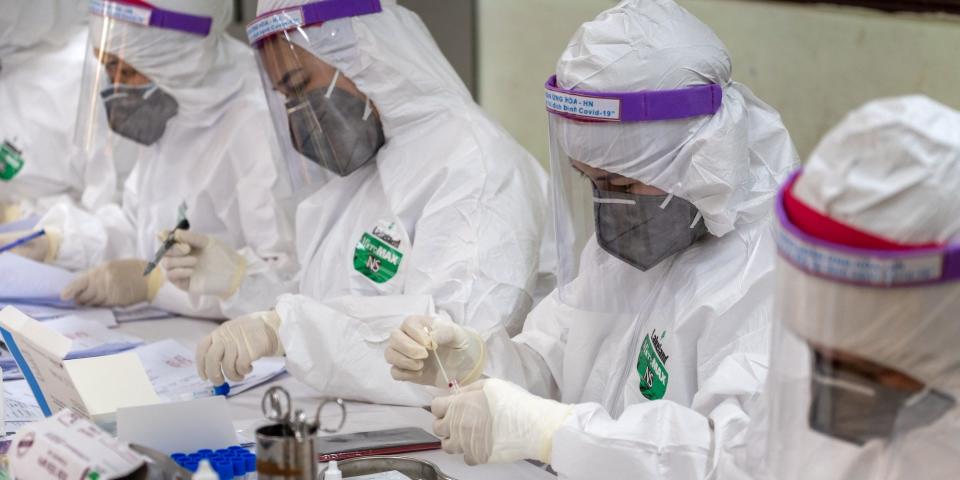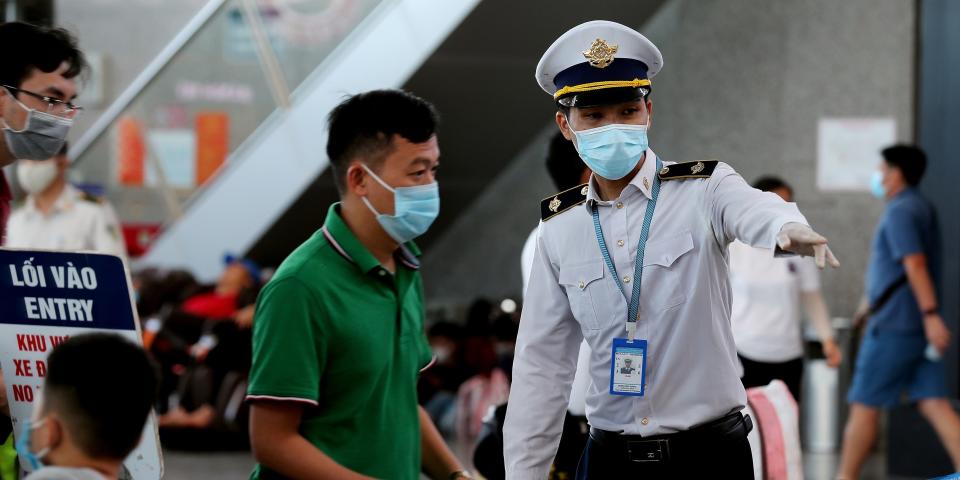Vietnam's health minister blamed a more infectious strain of coronavirus for a spike in infections — but there's little evidence that any strain is more dangerous
Vietnam's health minister suggested that a new strain of coronavirus is behind its recent spike in cases.
Each patient has been found to infect five to six people on average, he said, compared with a range of 1.8 to 2.2 before, Health Minister Nguyen Thanh Long said Sunday.
The strain appears to be new to Vietnam but has been seen in the British Isles and Bangladesh.
Viruses mutate over time, but scientists that does not necessarily result in a virus becoming more contagious or dangerous.
Vietnam's latest outbreak, first found in Da Nang on July 25, ended the country's 99-day streak of no new cases. Vietnam has said its health system could not handle a mass outbreak.

Getty
Vietnam's health minister has blamed a more infectious strain of coronavirus for the country's recent spike in infections.
Nguyen Thanh Long, the country's health minister, said on Sunday that those infected with the new strain have infected five to six people on average, Reuters reported.
Those infected with the original strain of COVID-19, which arrived in Vietnam in late January, passed it to an average of 1.8 to 2.2 people, he said.
Related video: What we know about immunity for the coronavirus
While the strain is new to Vietnam, it has been seen before in Bangladesh, Britain, and Ireland, according to Vietnamese scientists.
The latest cases, which were first found July 25, marked the end of a 99-day streak without any new cases.

Getty
Since then, 204 new cases have been identified, mainly in the region surrounding the coastal city of Da Nang.
Domestic tourists had flocked to Da Nang for their vacations, but 80,000 people were evacuated by plane last week after cases began to rise.
At the time, health authorities said the infections looked to be caused by a different strain of the coronavirus, which Long said had not been seen in Vietnam before July 25, the BBC reported.
A mutated coronavirus strain doesn't necessarily mean it's more contagious or dangerous
There are multiple strains of the novel coronavirus; the original D614 strain was found in Wuhan, China, in December.
Viruses mutate because of genetic errors over time. But mutations do not necessarily result in viruses becoming any more dangerous.
There is also not enough evidence to say that mutated strains of the new coronavirus are more contagious than the original.

HOANG KHANH/AFP via Getty Images
However, Marc Choisy, a biomathematician from the Oxford University Clinical Research Unit in Hanoi, told the Associated Press that many of the new cases in Vietnam right now seem worse than prior ones.
"One big difference I've noticed between this wave and the previous one is that the cases we have right now, a lot of them are severe," he said.
Long said he could not confirm reports in local media that the new strain was more contagious or more dangerous than its predecessor.
As of Monday morning, Vietnam had 621 confirmed infections and six deaths.
The World Health Organization had previously singled out Vietnam for its efforts in containing the virus, but the spike in cases is a somber moment.
Vietnam imposed a strict lockdown and travel ban early on, with the knowledge that the health system could not cope with a mass outbreak in mind.
For example, all 10,000 residents of Son Loi, a town near Hanoi, were placed under lockdown for 21 days in February, despite there being only 16 confirmed cases in the whole of Vietnam at the time, the AP reported.
Read the original article on Business Insider

